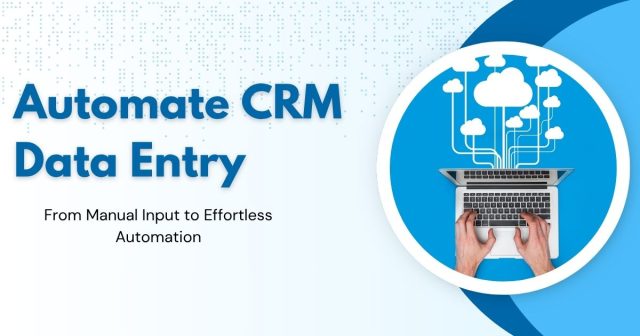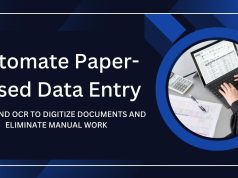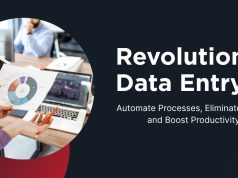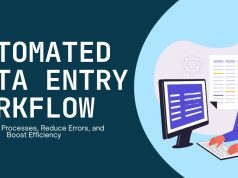CRM data entry automation saves time, reduces errors, and boosts productivity by handling repetitive tasks like lead capture, email logging, and contact updates. Tools like web forms, email parsing, APIs, AI, and OCR streamline workflows, improve data accuracy, and enhance customer interactions. Implementing automation with proper data validation, training, and monitoring allows teams to focus on revenue-generating activities, accelerate sales cycles, and improve overall business performance.
Why Manual CRM Data Entry Holds Your Business Back
Traditional CRM data entry creates multiple pain points that compound over time. Sales teams often struggle with incomplete records because updating customer information feels like a burden rather than a valuable activity.
Data inconsistency becomes a major issue when multiple team members enter information differently. One person might use “Inc.” while another uses “Incorporated,” creating duplicate records and confusion. These inconsistencies make it difficult to generate accurate reports and analyze customer trends effectively.
The opportunity cost of manual entry is substantial. Every minute spent typing contact details or copying information between systems is a minute not spent on strategic sales activities. High-performing sales teams recognize that automation isn’t just about convenience—it’s about competitive advantage.
Essential CRM Data Entry Automation Strategies

Web Forms and Lead Capture
Automated lead capture forms represent the first line of defense against manual data entry. When potential customers submit information through your website, this data should flow directly into your CRM without human intervention. Modern form builders integrate seamlessly with popular CRM platforms like Salesforce, HubSpot, and Pipedrive. For a complete setup guide, check out automate HubSpot data entry.
Modern form builders integrate seamlessly with popular CRM platforms like Salesforce, HubSpot, and Pipedrive. These integrations ensure that new leads appear in your system within minutes, complete with source attribution and initial engagement data.
Progressive profiling takes this concept further by gradually collecting additional information through subsequent interactions. Rather than overwhelming prospects with lengthy forms, you can build comprehensive profiles over time through multiple touchpoints.
Email Integration and Parsing
Email remains a primary communication channel for business relationships, making email integration crucial for CRM data entry automation. Advanced parsing tools can extract contact information, company details, and interaction history directly from your inbox.
These systems recognize email signatures, automatically creating or updating contact records based on sender information. They can also track email opens, clicks, and responses, providing valuable engagement metrics without manual logging.
Calendar integration adds another layer of automation by creating activity records for scheduled meetings and calls. This ensures your CRM reflects all customer interactions, even when team members forget to log them manually.
API Connections and Data Synchronization
APIs enable powerful connections between your CRM and other business tools. Marketing platforms, accounting software, and customer service systems can all share data automatically through API integrations. Real-time synchronization ensures that customer information remains consistent across all platforms. For more on practical API use, check CRM automation success stories.
Real-time synchronization ensures that customer information remains consistent across all platforms. When a contact updates their email address in your marketing system, that change propagates to your CRM immediately, eliminating version conflicts and outdated records.
Zapier and similar integration platforms make API connections accessible to non-technical users. These tools offer pre-built workflows that connect hundreds of applications with simple point-and-click configuration.
Advanced Automation Technologies

Artificial Intelligence and Machine Learning
AI-powered CRM data entry automation goes beyond simple data transfer to provide intelligent data processing. Machine learning algorithms can analyze incoming information and automatically categorize leads, assign lead scores, and even predict the best follow-up actions.
Natural language processing helps extract meaningful information from unstructured data sources like social media posts, customer reviews, and support tickets. This capability allows your CRM to capture insights that would otherwise require manual research and data entry.
Predictive data entry uses historical patterns to suggest likely values for new records. If most customers from a specific company follow similar patterns, the system can pre-populate fields and require only confirmation rather than complete manual entry.
Optical Character Recognition (OCR)
OCR technology transforms physical documents and business cards into digital CRM records. Mobile apps can photograph business cards and automatically extract contact information with impressive accuracy.
Document processing extends OCR capabilities to contracts, invoices, and other business documents. This technology can identify customer information, project details, and financial data, creating comprehensive CRM records from paper-based sources.
Quality OCR systems include verification steps that flag potentially incorrect extractions for human review, maintaining data accuracy while still providing significant time savings.
Implementation Best Practices

Data Quality and Validation
Automation has the power to significantly improve efficiency, but it also amplifies both strong and weak data practices. Before implementing CRM data entry automation, it’s critical to establish comprehensive data standards and validation rules. Clear rules regarding formatting, mandatory fields, and data types ensure that your automated systems produce clean, consistent, and usable records. For instance, specifying a standard format for phone numbers or addresses prevents inconsistent entries that can create duplicates or miscommunication.
Duplicate detection becomes even more crucial in automated workflows. Without safeguards, minor variations—like “Inc.” versus “Incorporated” or “Street” versus “St.”—can result in multiple entries for the same contact. Advanced CRMs allow you to set up criteria that automatically flag or merge potential duplicates, maintaining a single source of truth. Automated deduplication rules can either merge entries based on matching parameters or alert team members for manual review, ensuring accuracy without constant oversight.
Regular data audits are essential for sustaining high-quality information. By conducting monthly or quarterly reviews, you can identify recurring patterns of errors, integration issues, or gaps in validation rules. For example, if you notice frequent incomplete addresses being captured from a web form integration, adjustments can be made either in the form itself or in the automated workflow to ensure completeness. This proactive approach prevents small data errors from compounding into systemic problems that can affect reporting, decision-making, and customer interactions.
Automation improves efficiency but amplifies both strong and weak data practices. Clear rules regarding formatting, mandatory fields, and data types ensure that your automated systems produce clean, consistent, and usable records. Check how to create Excel automated data entry forms for examples of validated workflows.
User Training and Change Management
Successful CRM automation requires human adoption. Comprehensive training and well-documented workflows help employees navigate automated systems confidently. See CRM automation best practices for actionable guidance on implementation and change management..
Clear documentation is another critical element. Well-documented workflows, step-by-step guides, troubleshooting procedures, and escalation protocols ensure that employees can navigate the system confidently. This becomes especially important when automation encounters exceptions, such as incomplete data from a lead form or unexpected errors during API synchronization. Team members should know exactly how to respond to prevent disruptions in workflow continuity.
Gradual implementation often yields better results than attempting to automate every process simultaneously. Start by automating high-volume, low-complexity tasks—such as capturing new leads or updating basic contact details—before scaling to more complex operations like predictive lead scoring or multi-system integrations. This phased approach allows teams to adapt, provides opportunities to refine workflows based on initial feedback, and minimizes resistance to change.
Monitoring and Optimization
Once automation is implemented, continuous monitoring is essential to ensure the system operates efficiently and continues delivering value. Setting up alerts for potential issues—such as integration failures, incomplete data entries, or delayed processing—allows teams to address problems proactively before they impact business operations.
Tracking key performance indicators (KPIs) helps quantify the benefits and identify areas for improvement. Metrics such as time saved on data entry, error rates, user adoption levels, and lead response times provide measurable evidence of ROI. Regularly reviewing these metrics also highlights bottlenecks in automated workflows, enabling teams to make informed adjustments.
Periodic system updates and ongoing maintenance are equally important. Integration settings, validation rules, and user permissions should be reviewed regularly to ensure that the automated system evolves alongside business needs. For example, new marketing campaigns, product launches, or updated compliance regulations may necessitate modifications to workflows or data handling procedures. By adopting a culture of continuous optimization, organizations can maintain high data integrity, improve operational efficiency, and maximize the long-term benefits of CRM automation.
Measuring the Impact of CRM Data Entry Automation

Productivity Metrics
One of the most tangible benefits of CRM data entry automation is the significant time savings it delivers. By eliminating repetitive manual tasks, sales and customer service teams can devote more time to strategic, revenue-generating activities. Organizations implementing automation can reduce manual data entry time by 60–80%, allowing teams to focus on revenue-generating tasks. For broader digital efficiency improvements, see automated data entry boosts digital efficiency.
Beyond time savings, automation significantly improves data accuracy, which directly impacts decision-making and overall operational efficiency. Automated systems standardize entries, reduce human error, and enforce validation rules, ensuring that records are complete, consistent, and reliable. Monitoring key metrics such as error rates, missing data fields, and duplicate entries over time can quantify improvements and demonstrate the tangible benefits of automation.
Additionally, assessing user satisfaction is a critical component of evaluating productivity gains. Conducting surveys or interviews with team members helps gauge how automation affects their daily workflow. Positive feedback—such as reduced frustration with repetitive tasks and increased focus on meaningful work—signals successful implementation. Conversely, any recurring complaints can indicate areas where workflows need refinement or additional training may be required, allowing organizations to fine-tune their systems for maximum efficiency.
Business Impact
CRM data entry automation can dramatically improve core business outcomes by streamlining critical processes and enabling faster, more accurate responses. Lead response times, for instance, often improve significantly. Automated systems ensure that every new prospect is immediately entered into the CRM, triggering workflows such as follow-up emails, task assignments, or notifications for sales representatives. Faster responses increase the likelihood of engagement, as research shows that responding to leads within minutes rather than hours can dramatically improve conversion rates.
Sales cycle efficiency is another area positively affected by automation. When representatives no longer spend hours on administrative tasks like updating records or transferring data between systems, they can dedicate more time to building relationships, nurturing leads, and closing deals. Tracking metrics such as calls made per day, meetings scheduled, proposals sent, and deals closed provides clear evidence of how automation accelerates sales performance. Over time, this efficiency translates into increased revenue without additional marketing spend.
Customer satisfaction also benefits from CRM data entry automation. Service representatives gain immediate access to accurate, comprehensive customer histories, including previous interactions, purchases, and support requests. This enables them to provide highly personalized support, anticipate customer needs, and resolve issues more quickly. Improved data quality reduces mistakes, prevents repeated inquiries, and ensures a seamless experience across touchpoints. Organizations that monitor customer satisfaction scores and feedback after implementing automation often see measurable improvements in loyalty, retention, and overall service quality.
Transform Your CRM Data Entry Process
CRM data entry automation represents a fundamental shift from reactive data management to proactive customer relationship building. The strategies and technologies outlined in this guide can eliminate hours of manual work each week while improving data quality and customer experiences.
Start by identifying your highest-volume data entry tasks and exploring automation options for those specific processes. Many CRM platforms offer built-in automation features that require minimal technical expertise to implement.
The investment in CRM data entry automation pays dividends in improved productivity, better customer relationships, and more strategic use of your team’s time and talents. Begin your automation journey today and discover how much more your team can accomplish when freed from repetitive data entry tasks.
Frequently Asked Questions (FAQ)
How much time can CRM data entry automation save my team?
Depending on the complexity of your workflows, automation can reduce manual data entry time by 60-80%, freeing sales and support teams to focus on customer engagement and strategic initiatives.
Will automation eliminate the need for human oversight entirely?
No, automation complements human efforts rather than replacing them. While repetitive tasks can be handled automatically, human oversight is critical for validation, complex decision-making, and relationship management.
Can small businesses benefit from CRM automation?
Absolutely. Even businesses with smaller teams can save time and improve accuracy by automating lead capture, email logging, and contact updates. Automation scales as the business grows.
What types of CRMs support automation?
Most modern CRMs, including Salesforce, HubSpot, Pipedrive, Zoho, and Microsoft Dynamics, offer native automation features or integrations with tools like Zapier, Integromat, and AI-powered assistants.
Is AI-driven automation expensive to implement?
Costs vary depending on features and platform choice. Many CRMs offer built-in AI and automation capabilities, which are often more affordable than custom solutions. ROI is typically realized quickly through time saved and improved conversion metrics.
How do I ensure data accuracy with automated systems?
Implement validation rules, duplicate detection, and periodic audits. Combining automated quality checks with human review ensures clean, reliable data across your CRM.










